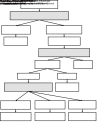Precision screening for esophageal squamous cell carcinoma in China
- PMID: 33446991
- PMCID: PMC7797228
- DOI: 10.21147/j.issn.1000-9604.2020.06.01
Precision screening for esophageal squamous cell carcinoma in China
Abstract
Esophageal squamous cell carcinoma (ESCC) is the predominant subtype of esophageal cancer in China, and this neoplasm is associated with high morbidity and mortality as well as clear geographical heterogeneity. Since primary prevention for ESCC lacks a clear intervention target, secondary prevention, also known as screening and early diagnosis and early treatment, has become the mainstay of ESCC prevention and control in China. ESCC screening in China has been subject to decades of evaluation and practice. However, the ESCC screening strategy currently adopted in China has encountered a developmental bottleneck. In this review, we have summarized studies and significant findings for ESCC screening and proposed advancement of screening strategies as follows: 1) evidence from randomized controlled trials is needed to support the effectiveness and health economic value of endoscopic screening for ESCC; 2) the current traditional screening and surveillance strategies warrant reform, and a risk-prediction-based precision strategy should be established; and 3) a deeper understanding of the value of opportunistic screening in the prevention and control of ESCC in China is called for. Due to the low absolute prevalence of precancerous lesions, substantial investment of resources and nonnegligible risks of invasive screening techniques, precision and individualization should be the main direction of cancer screening programs for the future. We advocate cooperation on the part of Chinese scientists to solve this major China-specific health problem in the next decades.
Keywords: Esophageal cancer; cost-effectiveness; opportunistic screening; organized screening; risk stratification.
Copyright © 2020 Chinese Journal of Cancer Research. All rights reserved.
Figures
References
-
-
Wild CP, Weiderpass E, Stewart BW. World Cancer Report 2020. Lyon: International Agency for Research on Cancer, 2020.
-
LinkOut - more resources
Full Text Sources

